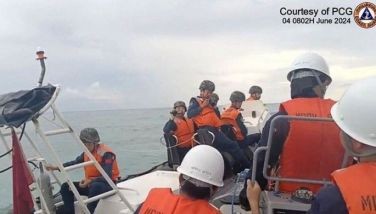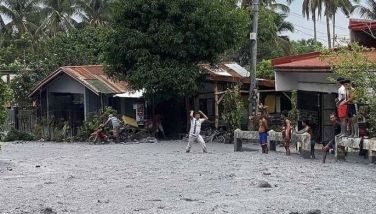DOTC reviewing bus franchise rules
MANILA, Philippines – The Department of Transportation and Communications (DOTC) has found numerous irregularities in the franchise of the ESO-Nice bus that plunged into a ravine that killed 42 passengers and injured seven others.
DOTC Undersecretary for Public Information Dante Velasco said the bus had already been sold by ESO-Nice to a private individual but continued to operate as part of the bus company’s fleet, servicing the same route.
This irregularity will have to be explained by the bus company in the hearing to be conducted by the DOTC-Land Transportation Franchising Regulatory Board (LTFRB) on the tragedy on Monday.
Velasco said that they are now looking at making mandatory for drivers of public utility vehicles (PUVs) driving lessons or modules given by the University of the Philippines’ National Center for Transportation Studies or other institutions that could provide good training for drivers.
The DOTC, through the LTFRB, had suspended the franchise of all 19 buses of ESO-Nice pending roadworthiness check.
Families of the victims will get indemnity from LTFRB insurance consortium Unitrans worth P60,000 each, while the injured will get P12,500 for medical claims, the DOTC said.
‘Cleansing’ ritual
An ancient “cleansing” ritual along the disaster area in Banangan, Sablan town where 42 passengers were killed in yet the most tragic highway disaster in Benguet is being proposed to drive away bad luck.
Called “daw-es,” Benguet Gov. Nestor Fongwan said “the indigenous ritual should be performed soon even not along the site.”
Even Baguio journalists who covered the horrifying seven-hour retrieval operations from the 30-meter ravine in sitio Guiwing, Banangan last Wednesday believe the tried-and-tested Cordillera “daw-es” ritual could calm down their charred spirits seeing the site of dead bodies taken one by one from the ill-fated bus.
In the interior Cordilleras, a black dog is butchered as an offering during the prayer ritual performed by a “mambunong” or “mumbaki” (native priest).
In ancient times, a daw-es is performed in interior Cordillera villages after an accident so that it will not happen again.
But young professional Harley Palangchao, of Bontoc-lineage, said a black pig will do.
He said he has consulted elders from his family’s hometown in hinterland Bontoc, Mountain Province and they vouch a pig will do.
It could also become our way of “after disaster” stress debriefing, Palangchao and veteran Baguio journalist Frank Cimatu said.
This, aside from reactive measures being undertaken by agencies tasked to probe and institute reforms in the public transport industry, former Baguio City Disaster Coordinating Council (CDCC) action officer and city councilor Peter Fianza insists “there is more to road accidents than road conditions, weather and the drivers’ skills.”
The city councilor is deep into crafting a resolution asking Congress to consider a measure implementing a nationwide number coding scheme for buses, vans, and jitneys on provincial operations.
President Aquino has ordered a multi-agency probe, saying he considers “mechanical problems as lame excuses for similar mishaps.”
In 1999, a similar accident happened also to a Baguio Bus Lines (BBL) in Banagan, killing most of its passengers.
“In both 2010 and 1999 cases, mechanical problems were blamed,” Fianza said.
“If indeed mechanical problems are prevalent in cases of vehicular accidents, a day’s break under a coding scheme for public utility vehicles on inter-local government operations would ensure proper maintenance of PUVs.”
Admitting road conditions and weather are factors in vehicular accidents, Fianza cited the need to consider what happened with the vehicles and the people responsible for running these.
Various proposals
Various proposals such as requesting the Department of Public Works and Highways for construction of skid-rails and parapet barriers were filed in the city council since the 1999 BBL tragedy.
But road conditions in the same area along Naguilian stay the same.
“Thus, there is likewise a need to localize application of Republic Act 10121, which is the Philippine Disaster Risk Reduction and Management Act,” Fianza said.
The law, approved in May 2010, shifts the focus from disaster response and recovery towards disaster risk reduction, preparedness and mitigation.
“In this way, we could address manpower and equipment concerns of our CDCC.”
Fianza said “the number of PUV’s and trucks plying our arteries are rising, localizing application of RA 10121 would likewise adapt the law’s implementation to Baguio’s treacherous terrain.” – With Artemio Dumlao
- Latest
- Trending



























